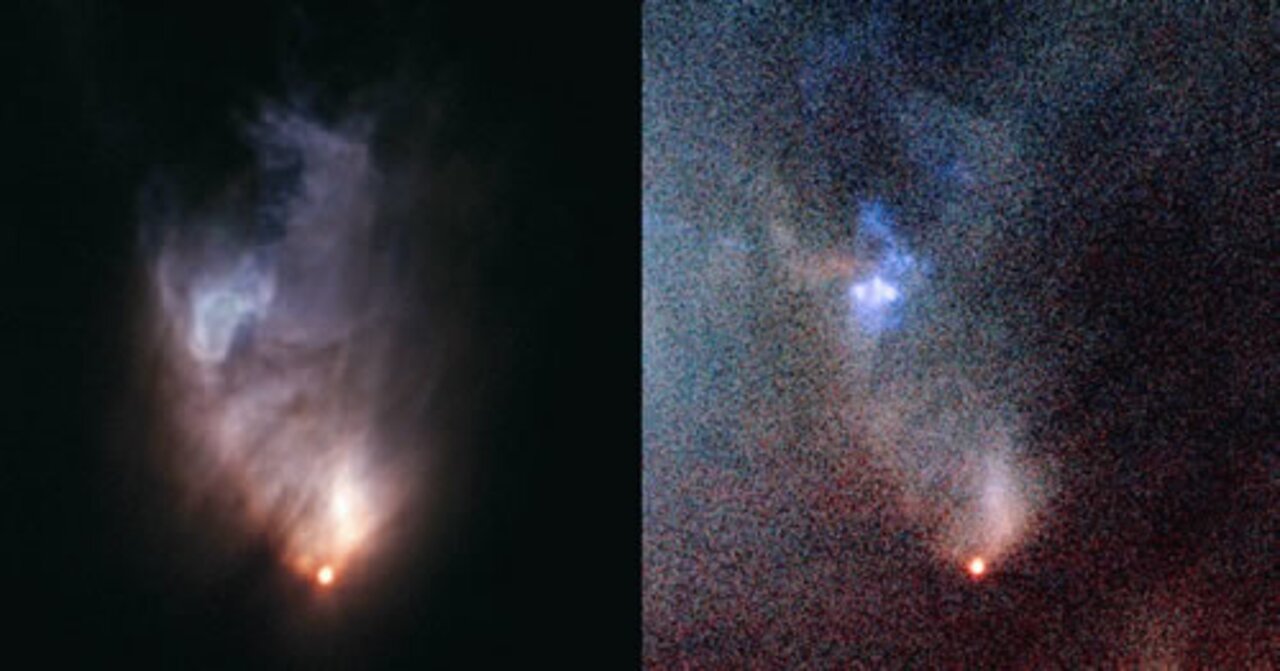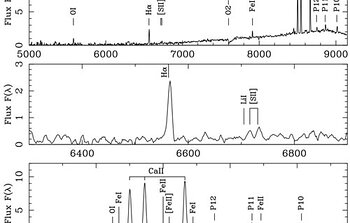A Young Erupting Pre-main Sequence Star Takes a (Long) Nap
January 16, 2008

A “new” star appeared in the constellation of Orion in late 2003 when the young pre-main sequence star V1647 Orionis went into outburst. The eruption and huge increase in brightness of the object resulted in the appearance of a reflection nebula called “McNeil’s Nebula,” named after the amateur astronomer, Jay McNeil, who discovered the object and alerted the world.
During the outburst the star and nebula remained bright for approximately 18 months before fading rapidly over a six month period. By early 2006 the star and its environment were very similar to their pre-burst stage. The event was monitored and observed with many ground- and space-based facilities and Gemini Observatory played a key role in monitoring the event during its eruptive and quiescent phases. A team led by Colin Aspin (IfA/University of Hawai‘i), Tracy Beck (STScI) and Bo Reipurth (IfA/University of Hawai‘i) spearheaded the monitoring campaign of this unique event.
The eruption of V1647 Orionis is most likely associated with a mass dumping of the inner regions of a heated circumstellar disk onto the young stellar photosphere. The spectacular flaring in brightness of the object is due to a significant increase in accretion luminosity and the clearing or destroying of surrounding dust by an energetic wind that made the star visible. These eruptions are thought to be repetitive and indicative of periods when a significant fraction of the final star’s mass is accreted.
The authors describe three phases for the V1647 Orionis latest eruption:
- Before November 2004 is the pre-outburst phase
- From November 2004 to February 2006 is the outburst phase
- From February 2006 is the quiescent phase
The Gemini observing campaign led by Aspin has revealed some interesting results, particularly for the quiescent period. These include:
- McNeil’s Nebula is faintly visible in these GMOS-N images (Figure 1 right) indicating that the nebular material is still weakly illuminated by the star V1647 Orionis. At the time of acquisition of the GMOS-N imaging and spectroscopic data , V1647 Orionis had an r’ magnitude of 23.3.
- NIRI spectroscopy has revealed for the first time in this type of object the presence of molecular overtone absorption from CO and other key diagnostic atoms like Na and Ca (possibly betraying the photosphere of the star), see Figure 2. The 2um spectroscopy shown in the paper is from IRTF not NIRI. We did publish NIRI spectroscopy but from just after the outburst, not in quiescence.
- The star has a mass of about 0.8 solar mass and its age is about half a million years or less.
- V1647 Orionis in this pre-main sequence phase is about five times more luminous than the Sun.
- Material is falling onto the star at a rate of about one millionth of a solar mass per year.
- Mid infrared observation with MICHELLE/Gemini show evidence of silicate dust evolution over the outburst-to-quiescence period, see Figure 3.
In a previous article on V1647 Orionis, Aspin studied a previous outburst of the star which occurred in 1966. It seems that perhaps V1647 Orionis ‘wakes up’ every 37 years but soon (after 1 to 2 years) tires and takes another long nap!
Links
- "V1647 Orionis: One year into quiescence", by C. Aspin, T. Beck and B. Reipurth in The Astronomical Journal, January 2008, pp. 423-440.
- "The 1966-1967 Outburst of V1647 Orionis and the Appearance of McNeil's Nebula", by C. Aspin and others in The Astronomical Journal, Volume 132, Issue 3, pp. 1298-1306.




